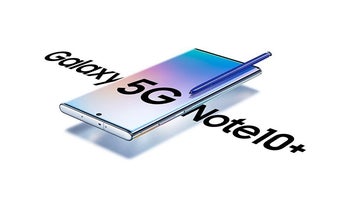Less than 10% of Americans are spending $1,000 on a new phone

It might seem that everyone around you owns a high-priced flagship phone. But according to data from NPD (via ArsTechnica), less than 10% of American consumers spend more than $1,000 for a new handset. So no, not everyone on the subway next to you is sporting the iPhone 11 Pro Max or the Samsung Galaxy Note 10+. And this means that the transition to 5G might not provide a big boost to the U.S. smartphone market as many expect.
5G, the next generation in wireless connectivity, will deliver download data speeds about 10 times faster than 4G LTE, and the faster speeds could draw in consumers who normally don't spend four figures on a new phone. These people might have sat on the sidelines over the last few years saving up to buy a 5G phone. However, there will still be a large number of Americans who would never spend $1,000 on a new device even if it promised them eternal life; for these consumers, the pricing of 5G phones is going to have come down sharply before they have an interest in purchasing one.
As you might imagine, the report notes that Americans living in big cities like New York City are more apt to spend $1,000 or more on a phone. But it is unclear whether this is due to the higher incomes that people earn in those huge metropolitan areas. NPD also suggests that because cities like New York City and Los Angeles are media centers of the country, flagship phones get more media coverage than other handset models. Many Americans love to hear about features and technologies on new flagship phones even though the majority of the country can't afford models that have all of these features.
Who will blink first, U.S. consumers or 5G phone manufacturers?
Samsung has tried to capitalize on this data by making sure that the major U.S. carriers offer at least one of its lower priced Galaxy A models. Samsung's goal on th isline is to offer a mid-range phone with a viable rear-camera system and large batteries at a decent price. Take the Galaxy A50, available from Verizon for 24 monthly payments of $10 with a new line, or $349.99. For that price, you get a 6.4-inch Super AMOLED display with a 1080 x 2340 resolution (which works out to an aspect ratio of 19.5:9. The phone is powered by the Exynos 9610 chipset and comes with 4GB of memory and 128GB of storage. On the back is a dual-camera setup (25MP primary + 8MP ultra-wide + 5MP depth sensor). The Infinity-O display used on the phone has a single punch-hole 25MP front-facing selfie snapper. A 4000mAh battery keeps the device running for a long time between charges. If you're not a phone snob or a power user, this phone might be perfect for you.
And take a look at the resurgent Motorola. A device like the Motorola One Hyper features a 6.5-inch FHD+ display, a 32MP pop-up selfie camera, thin bezels, 4GB of memory and 128GB of storage for $399.99. With a Snapdragon 675 SoC inside, most average users might not notice much of a difference in the phone's performance (keep in mind that this model works only on GSM networks like those employed by T-Mobile and AT&T in the states). And if battery life is the most important thing on the spec sheet, there is the Moto G7 Power. Priced under $250 and free if you add a new line at T-Mobile, the device carries a 5000mAh battery that provides up to 3 days of use on a single charge. If you want an outstanding camera, the mid range Pixel 3a line is available for a price as low as $399.

The mid-range Samsung Galaxy A50 (L) and Galaxy A30 (R)
If only 10% of Americans own a $1,000 phone, that means 90% of Americans have a lower-priced model. And this is why the iPhone 11 is outselling the iPhone 11 Pro and iPhone 11 Pro Max. Apple stunned everyone by pricing the 64GB model at $699.99, $50 cheaper than the launch price of last year's 64GB iPhone XR.
It should be interesting to revisit this data a couple of years after 5G becomes dominant in the states; someone will have to blink first. Will it be U.S. consumers shelling out for more expensive 5G phones, or will the manufacturers keep prices down and take a hit to their margins in order to help the migration to 5G?










Things that are NOT allowed: